“Being Red Heels”. No doubt you have already read, or even heard, this old expression. It comes to us from this fashion launched by "Monsieur", the brother of King Louis XIV, in a completely involuntary way. Adopted by all the courtiers of Versailles and by Louis XIV himself, red heels became a way of life. Let's come back to this unusual anecdote.
The fashion for red heels, accidentally created by the younger brother of Louis XIV
Who is Philippe d'Orléans, the brother of Louis XIV?
Philippe de France, younger brother of Louis XIV, was born on September 21, 1643. He knew very little about his father, King Louis XIII, who died when he was only 3 years old. Known as "Monsieur", reserved for the King's brother, he was titled Duke of Anjou from birth. He will then take the title of Duke of Orleans. Very quickly removed from the politics of the Kingdom, he leads a life of splendor accompanied by his favorites and cuties. Even if he is married successively to Henrietta of England, then to Princess Palatine, the younger brother of the King is known for his Italian vice (understand his penchant for men). He is credited with more than 30 years of relationship with the Chevalier de Lorraine.
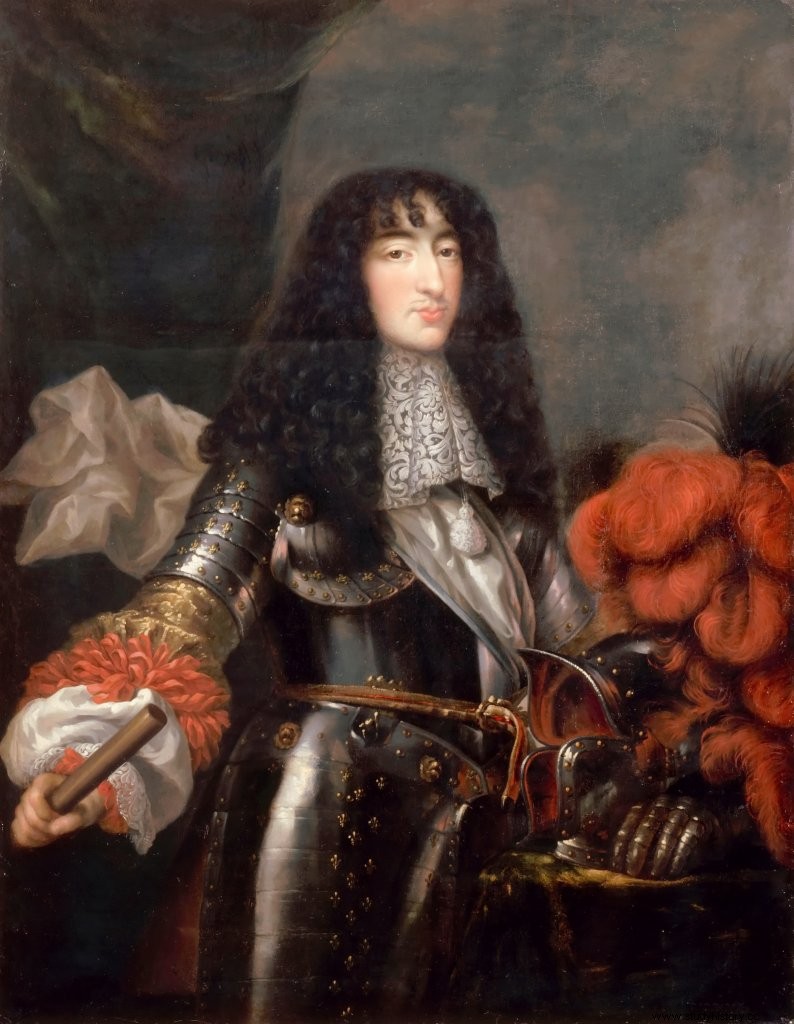
"Monsieur", an avant-garde with an eccentric personality
Sir, Philippe d'Orléans, is a colorful character. His taste for extravagant attire and finery set the tone for the entire Court of Versailles . It must be said that the younger brother of the King was accustomed very young to dresses adorned with finery and lace. His mother, the Regent Anne of Austria, wanted to make him a frivolous man, unable to revolt against his brother the King. Philippe does not claim to reign, what he wants is to have fun and enjoy the pleasures of life .
Philippe d’Orléans’ red heels:stained with blood at the Grande Boucherie
All occasions are good for Monsieur to party. At the end of 1662, he left with his friends and the Chevalier de Lorraine for Paris. The Winter Carnival is held here near the Cemetery of the Innocents in the heart of the capital (current Les Halles district). The King's Brother goes to the Carnival balls, but he is very quickly recognized by courtiers who have come to have fun. Which is not to Mr.'s taste. He likes to have fun, ignoring the good manners worthy of his rank. Never mind, the Duke changes his plans and takes his friends from tavern to tavern, which leads him to the Grande Boucherie near the Grand Châtelet. It is here that the cattle that feed the capital are slaughtered and sold. In other words, a place not really welcoming for a prince of royal blood. But the party is in full swing for Philippe, the Chevalier de Lorraine and the other minions of the Duke. They have fun, wander from tavern to tavern and toast at all costs – all without being recognized. During this evening, Monsieur, usually very precious, does not really pay attention to cleanliness of his toilet. The ground is covered with the blood of oxen, thus staining the pretty heels of the younger brother of Louis XIV . Her heels are completely red with blood.
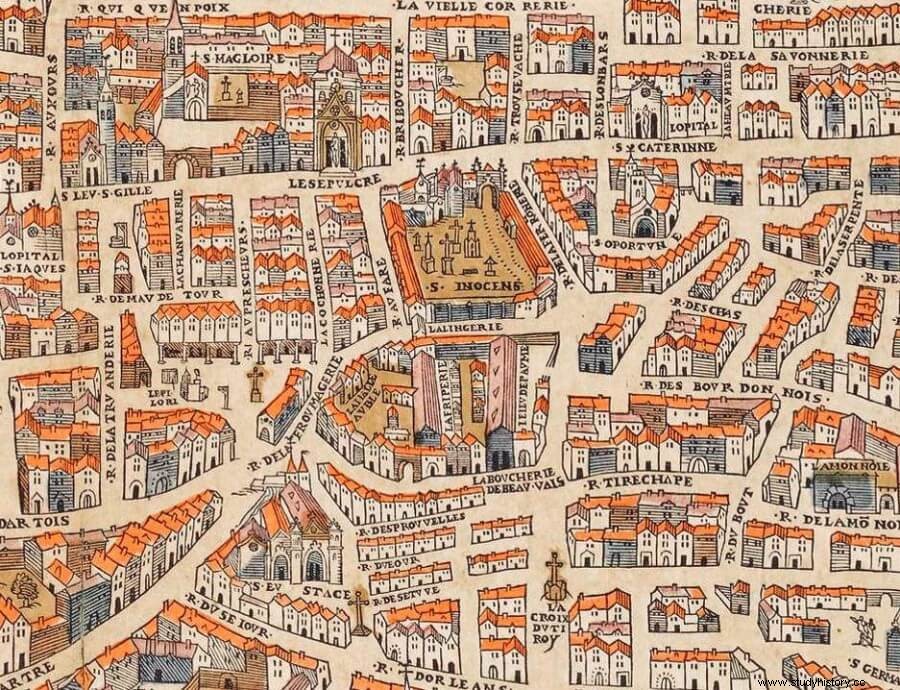
The discovery of red heels by Louis XIV
The evening ends in the early morning for Monsieur and his fine team. At daybreak, they return by coach to the Palace of Versailles. Once the gate of the Castle passed, Philippe becomes again the Duke of Orleans. His obligations to the Kingdom take over. That morning, on returning to his apartments, he came face to face with a bailiff . This messenger from the King was waiting for him impatiently:his brother, Louis XIV, immediately sent for him to the Council . Philippe has just enough time to put on a new jacket, without paying attention to the cleanliness of the rest of his toilet.
When he enters the Cabinet of the Council, all of the King's advisers turn around and observe him in amazement . To the great astonishment of Monsieur, who does not understand these insistent looks. After his seat on the Council, the Duke goes to rest in his apartments, exhausted from this crazy night of the Winter Carnival. When he wakes up, strolling through the halls of the Palace of Versailles, what was his amazement!The courtiers all wear red high heels.
Red heels:fashion phenomenon adopted by the Court of Versailles
The adoption of red heels by the Sun King and the courtiers
What astonishment for the King's brother. He approaches a courtier and asks him where this new fashion comes from. The latter replies very simply that this fashion comes from himself, and from the heels he wore that very morning at the King's Council.
Louis XIV, seeing his brother's red heels, was simply conquered. The Monarque liked this contrast of the red of the heels with the royal blue that he could observe on his brother's jacket. He wants the same thing, to the delight of the wife of Louis XIV! It is with eagerness that he asks his shoemakers to adorn his red leather heels. Fashion spread very quickly throughout the Court of Versailles . That same evening, all the courtiers had their heels covered in red leather, just like the King of France. They thus replace spurs and blue lysed flower ankle boots. And like his brother before him. Philippe d'Orléans launched a very particular style completely involuntarily. In the weeks that followed, the Court's red heels became much more than a fad. Like wearing the fly on the face , wearing red heels sends a message to high society.
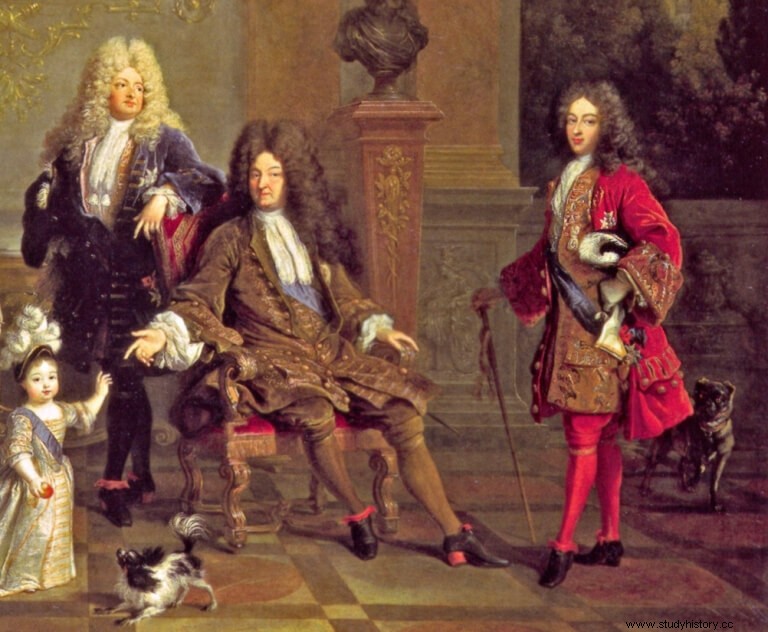
“Being red heels”:above all a social distinction
A source of social distinction, red heels define the rank of a gentleman. Only persons of quality admitted to the Court of Versailles are authorized to wear them. Thus, at a glance one can know the status and privileges of a courtier of the nobility.
In the 19th century, this fashion turned into expression. "Being red heels" means you have good manners, but a pretentious personality. No doubt a somewhat roundabout way of defining nobility.
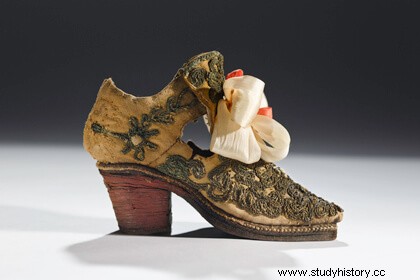
The portrait of Louis XIV in coronation costume…and red heels
The famous painting of Louis XIV in coronation costume by Hyacinthe Rigaud attests that this fashion is definitely rooted in the Court of Versailles. Almost 40 years after this famous evening near the Cemetery of the Innocents, Louis XIV will have his portrait taken proudly wearing… his famous red heels. This painting was commissioned by the Sovereign for his second grandson, Philippe d'Anjou, King of Spain. This painting quickly established itself as the "official" portrait of the Sun King. It represents the image of royal power.
All the elements reminiscent of royalty and absolute power are present. We find the coronation mantle, in blue velvet and embroidered with fleur-de-lys in gold thread. The Sun King wears the Collar of the Order of the Holy Spirit. The scepter and the hand of justice, symbol of the power and power of the Monarch, are also present on this painting. And of course, there are the famous red heeled shoes, adorned with windmill knots. Their presence on the official portrait of King Louis XIV shows that they are directly associated with power and power.
For the record, this painting was painted twice by Hyacinthe Rigaud. Appreciating the perfect resemblance and the quality of the work done, Louis XIV asked the painter to make a copy. The King kept the original at the Château de Versailles, and had the copy sent to his grandson Philippe V, King of Spain.
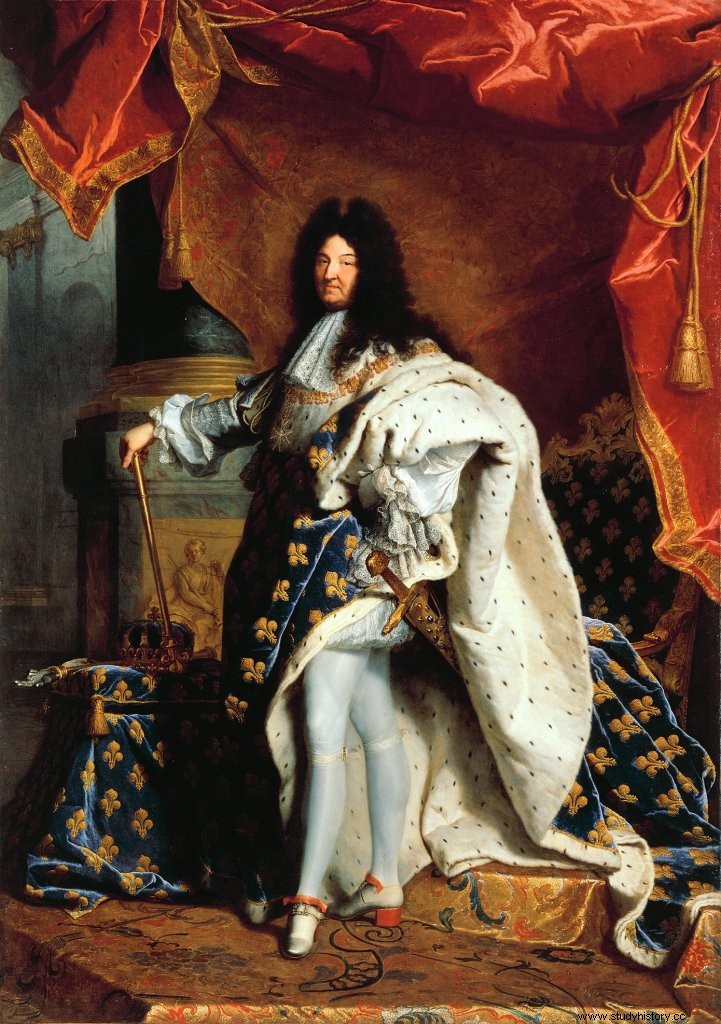
Why did Louis XIV wear high heels?
Under Louis XIV, heels enjoyed real success. The Sovereign is a big fan of heeled shoes. Why ? Because he is not very tall, only 1m63. All means are good to grow and approach the sun as closely as possible. He adopts high wigs and almost 12cm heels to look taller . It is a success, because Louis XIV gains up to 30cm in height. Fortunately, we don't walk much at Court.
Under Louis XIV, shoes were true works of art, and shoemakers true artists. The wooden heels are decorated with various miniature scenes. This fashion known as "come and see" spread very quickly among courtiers. The shoes are decorated with lace, ribbons and have a square toe.
In addition to increasing the size of the artist who wears them, heeled shoes give an elegant look. They make it possible to highlight the curve of the calves, a real attribute of seduction at the time. This is why men wear tights, thus highlighting them. The same is true for the King. On his official portrait painted by Hyacinthe Rigaud, a "lining" was used for his legs.
Louis XV will adopt the same fashion for red heels as his late grandfather. It was at the time of the Revolution, at the end of the 18th century, that red heels disappeared. Powdered wigs, ornate shoes, and all fashion accessories reflecting social distinction are simply prohibited.
A veritable cult of fashion, red heels were reborn from their ashes from 1992. Designer Christian Louboutin used the red leather sole as a trademark and as a true emblem. More than a fashion, it offers the wealthiest the opportunity to distinguish themselves and show their social rank to all.
Who would have thought that Monsieur, an eccentric character from the 17th century, would have such a significant influence on fashion 300 years later?
